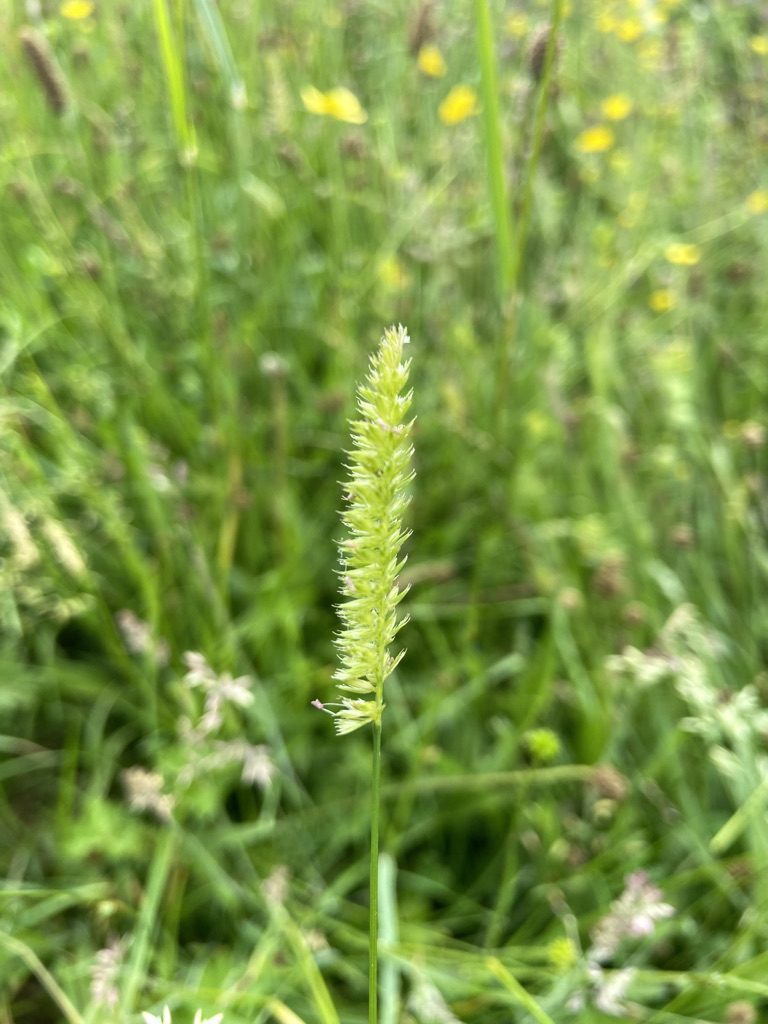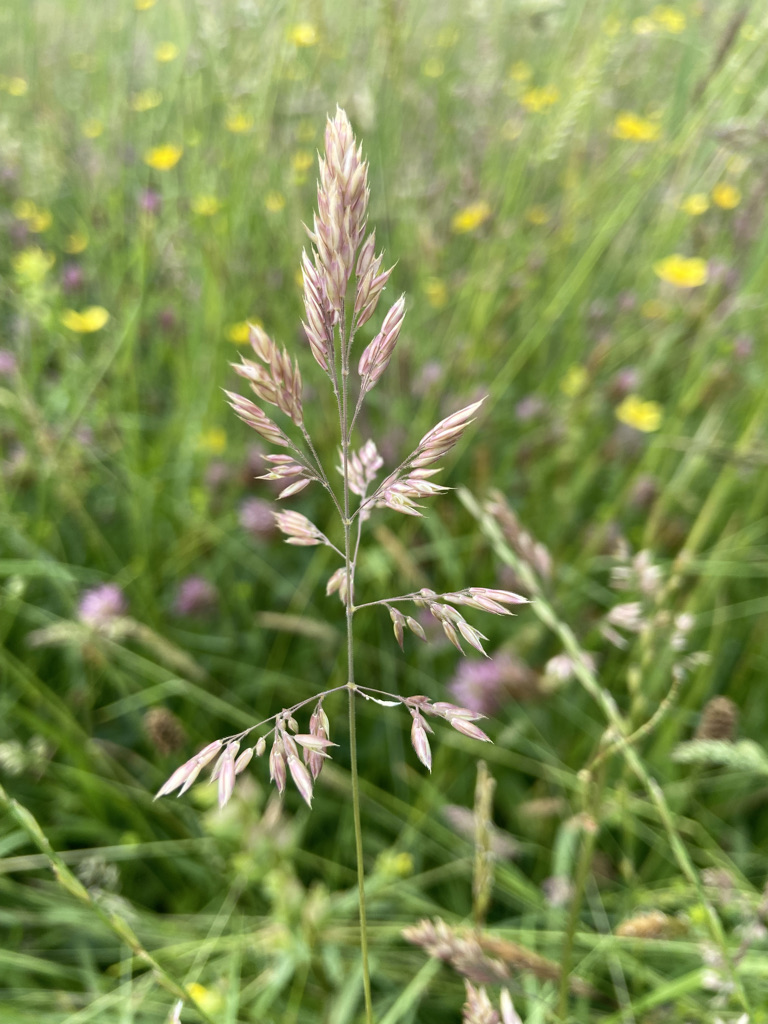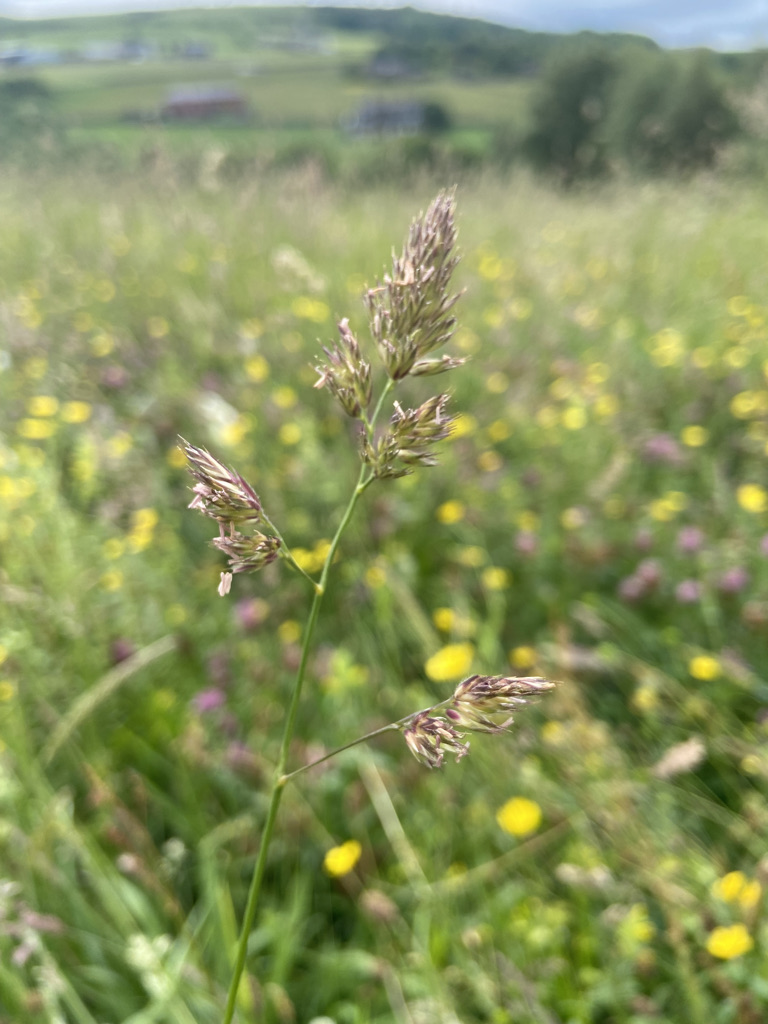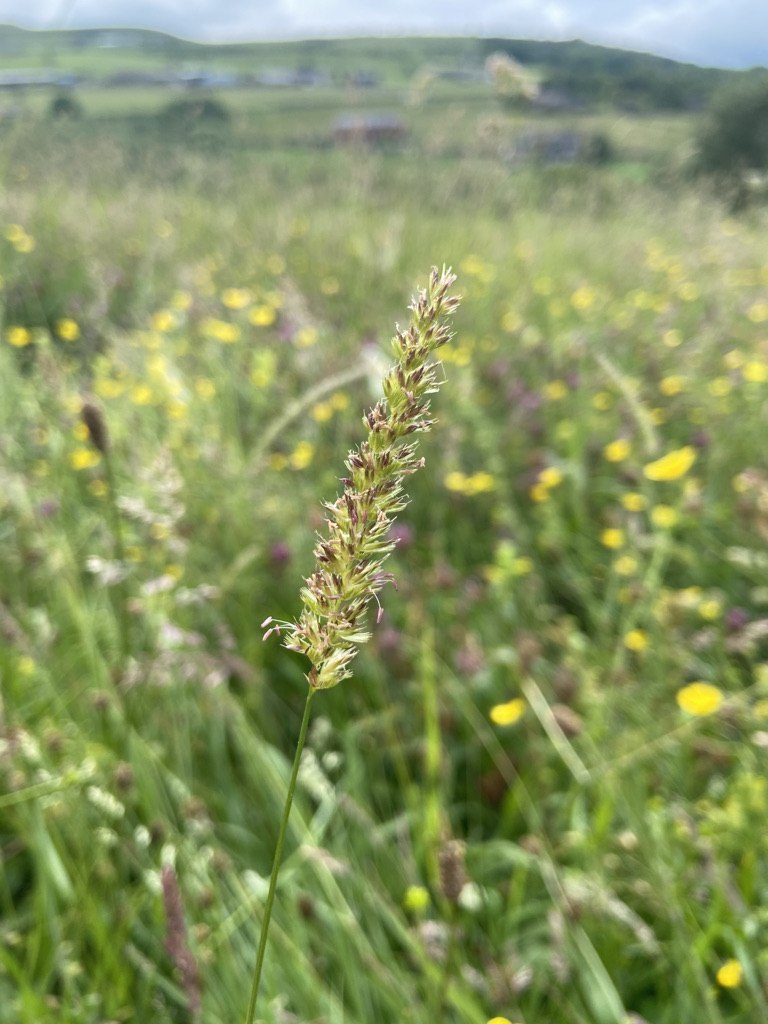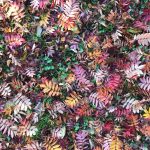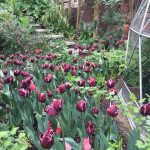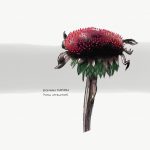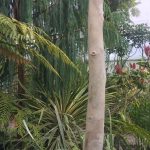I’ve created this page as notes for myself on what species we’ve seen in our meadow and how many of each. I’ll be updating this over time, so it’s worth popping back in the future if you’re interested.
Population density
5 = prolific, found in almost every metre across entire field
4 = found across entire field but in large to medium patches
3 = found throughout field but in many medium to small patches
2 = a number of plants dotted around the field individually or in small groups
1 = only one or two plants
2021 notes
We had our field cut in our first year on the 15th July because this is when local farmers needed it for the hay to be of usable quality, though most fields around us were cut long before this in early June for feed.
This date is kinda OK, as most plants had gone to seed but for increasing biodiversity it would be far better to cut in mid to late August. You’ll see from my notes below, that the numbers of late season perennials like lady’s bedstraw, knapweed, cats ear and the vetches are low. That’s because they have only started flowering now, in mid-July here, just as they’re cut.
If I can delay our cut until late-August, I expect I can increase the quantity/range of flowering species by at least 30% if not 50%, which obviously has knock on effects for species of insect, bird and other wildlife.
2022 notes
It’s 15 July, exactly a year to the day the field was cut last year. Many late season perennials are just coming into flower: knapweed, field scabious, lady’s bedstraw, hogweed. It would be impossible for these to set seed if cut now. I counted the eyebright flowers and only 6 out of 15+ flowers had set seed on the few I looked at, approximately. Although those numbers of flowers are approximate, it was true of all of them that only the lower flowers had even begun setting seed. And so with more time, the number of seeds will be 50 – 70% greater in quantity.
2023 notes
30 May: So far this year, the yellow rattle is still prolific and grasses seem extremely reduced in centre of the field, but the yellow rattle doesn’t seem as vigorous as last year yet. Though I haven’t seen any eyebright this year yet either. On the plus side, I have noticed a lot more pignut this year. Not large numbers but the odd plant in various spots around the meadow, particularly in one area that also has good amounts of fungi. Cow parsley is increasing in number.
Flowering plants
Anthriscus sylvestris, cow parsley
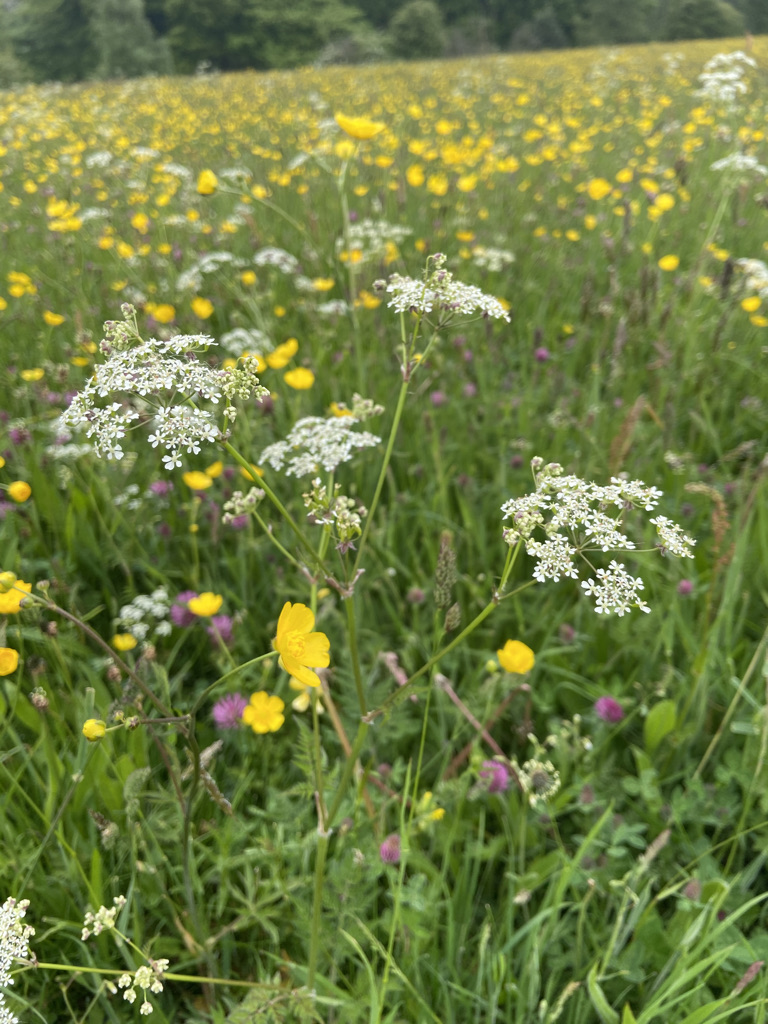
| 2021 | 2022 | 2023 | |||||||
| Density | 2 | 2 | 2 |
2023: cow parsley is definitely increasing in number
Betonica officinalis, betony
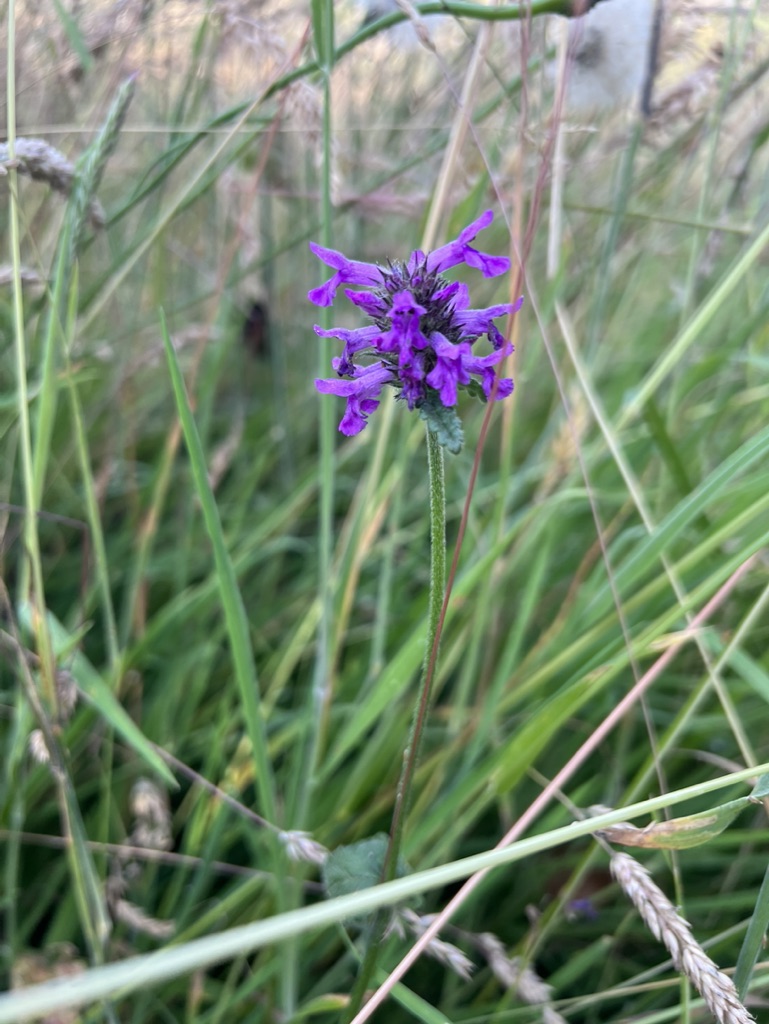
| 2021 | 2022 | ||||||||
| Density | – | 1 |
2022: spotted this for the first time near the stream, top.
Centaurea nigra, common knapweed
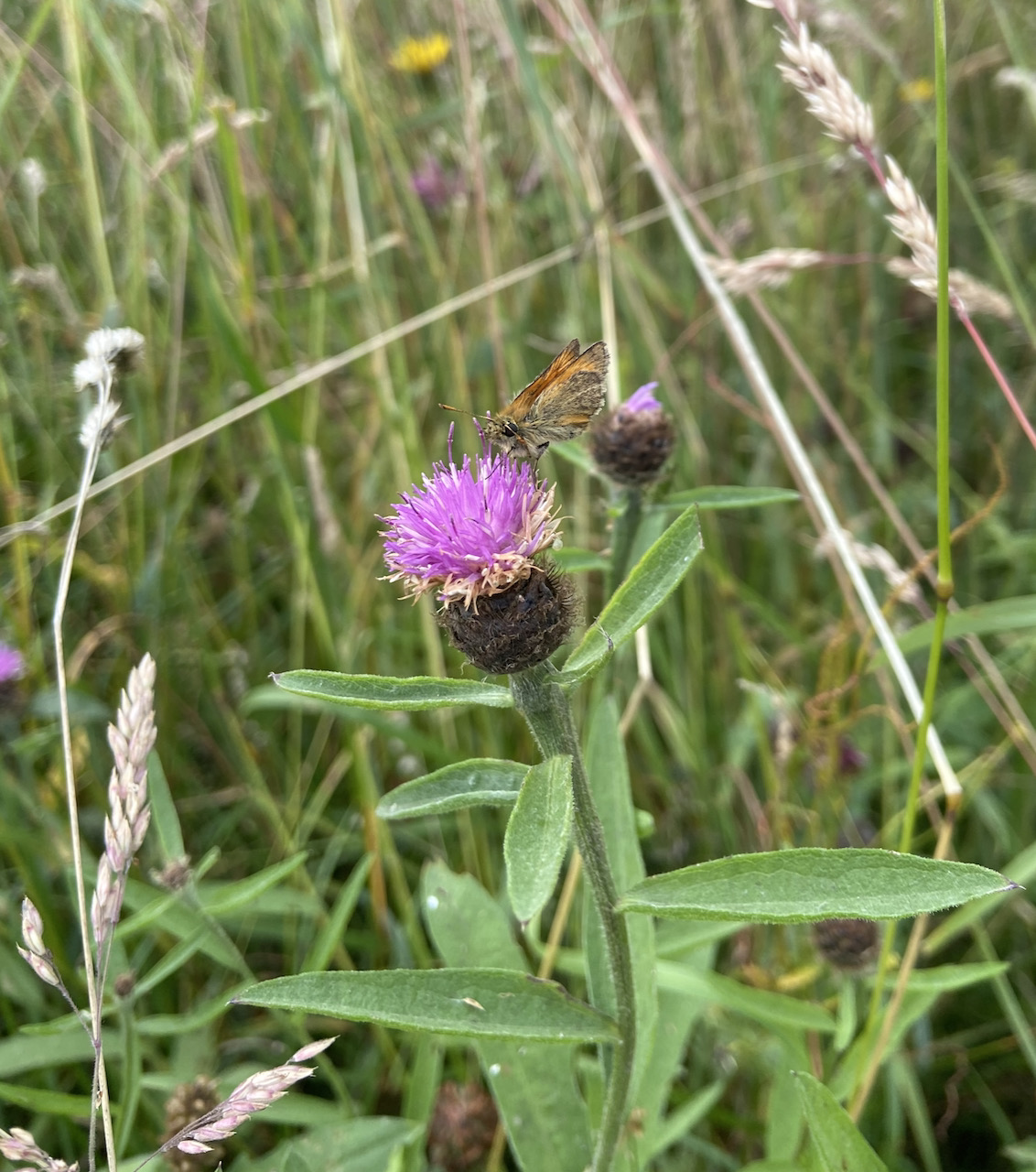
| 2021 | 2022 | ||||||||
| Density | 1 | 1 |
2022: Perhaps a couple more plants this year on the left of the meadow (looking down hill).
Cerastium fontanum, common mouse ear
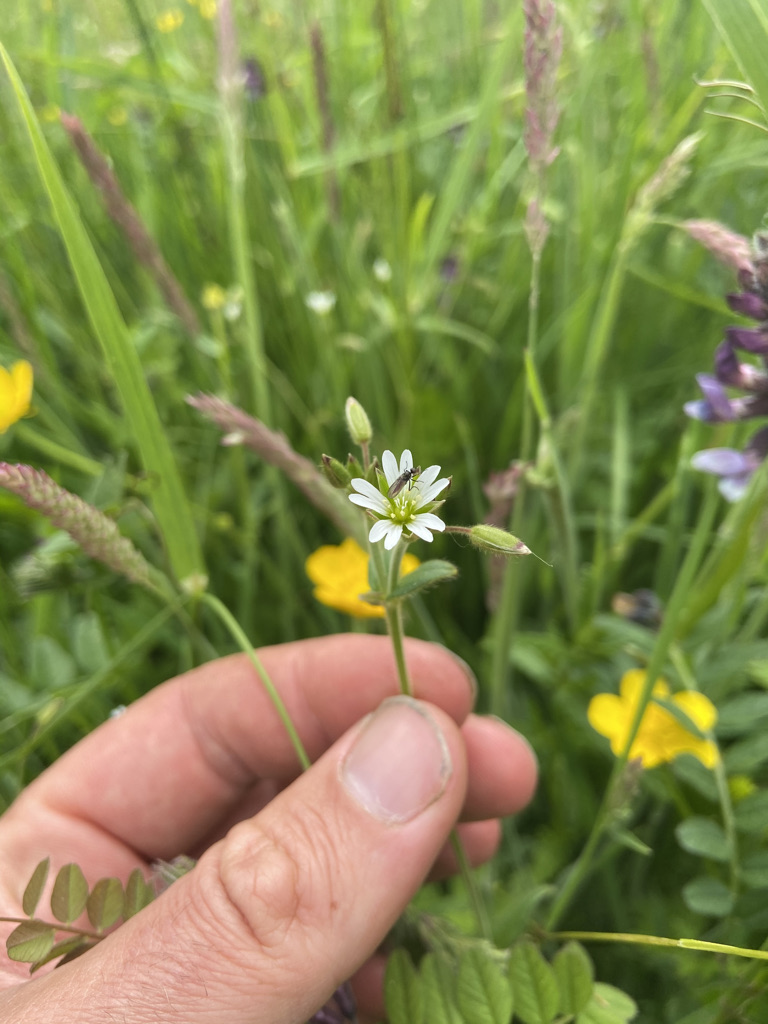
| 2021 | 2022 | 2023 | |||||||
| Density | 2 | 2 | 2 |
2023: spotted throughout meadow as of 30 May.
Conopodium majus, pignut
[no photo yet from in field]
| 2021 | 2022 | 2023 | |||||||
| Density | 1 | – | 2 |
2022: none seen
2023: spotted quite a few across the field, usually individual plants, though in one spot there is a small colony, though sparse. Not huge numbers, but I have seen about 30 or so plants across the meadow.
Digitalis purpurea, foxglove
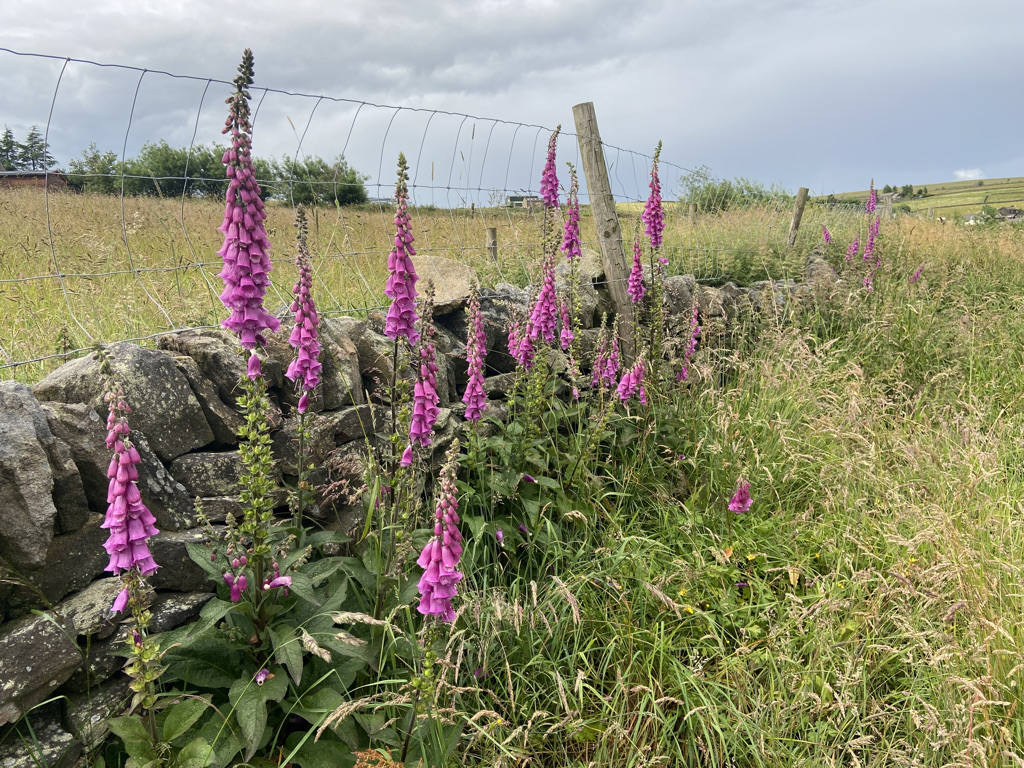
| 2021 | 2022 | ||||||||
| Density | 1 | 1 |
2022: perhaps slightly fewer at the top of the meadow this year.
Euphrasia arctica (suspected species), eyebright
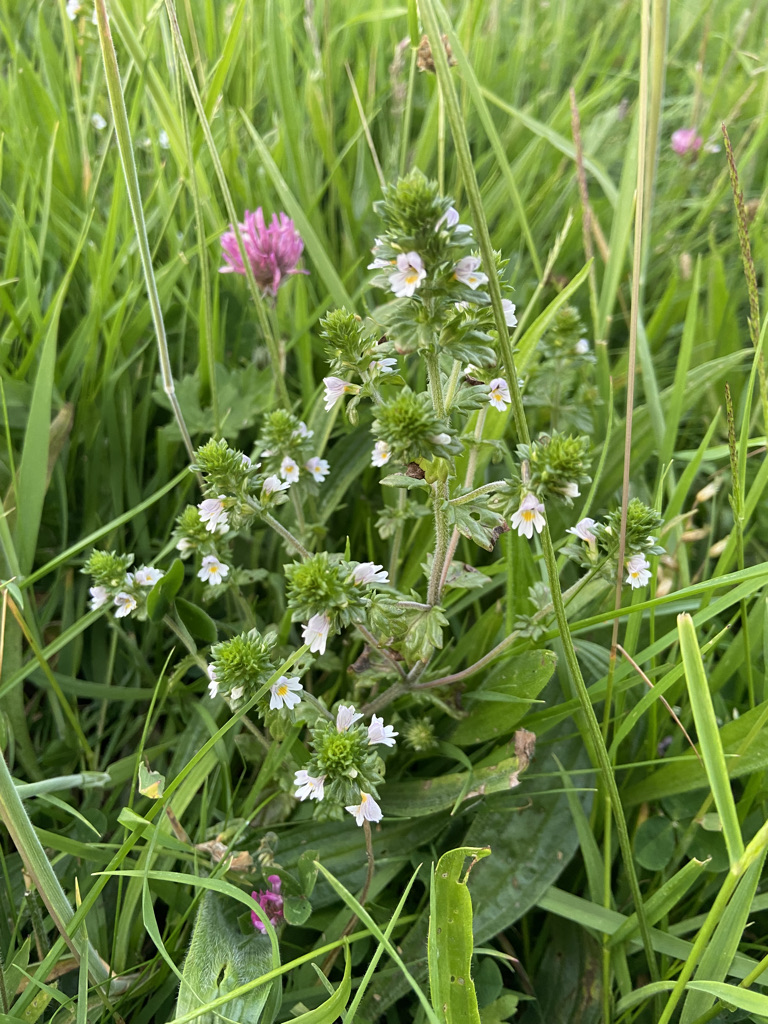
| 2021 | 2022 | ||||||||
| Density | 3 | 2 |
2022: eyebright is less visible this year, perhaps it’s there beneath plantain and yellow rattle but it is less visible.
Lathyrus pratensis, meadow vetchling
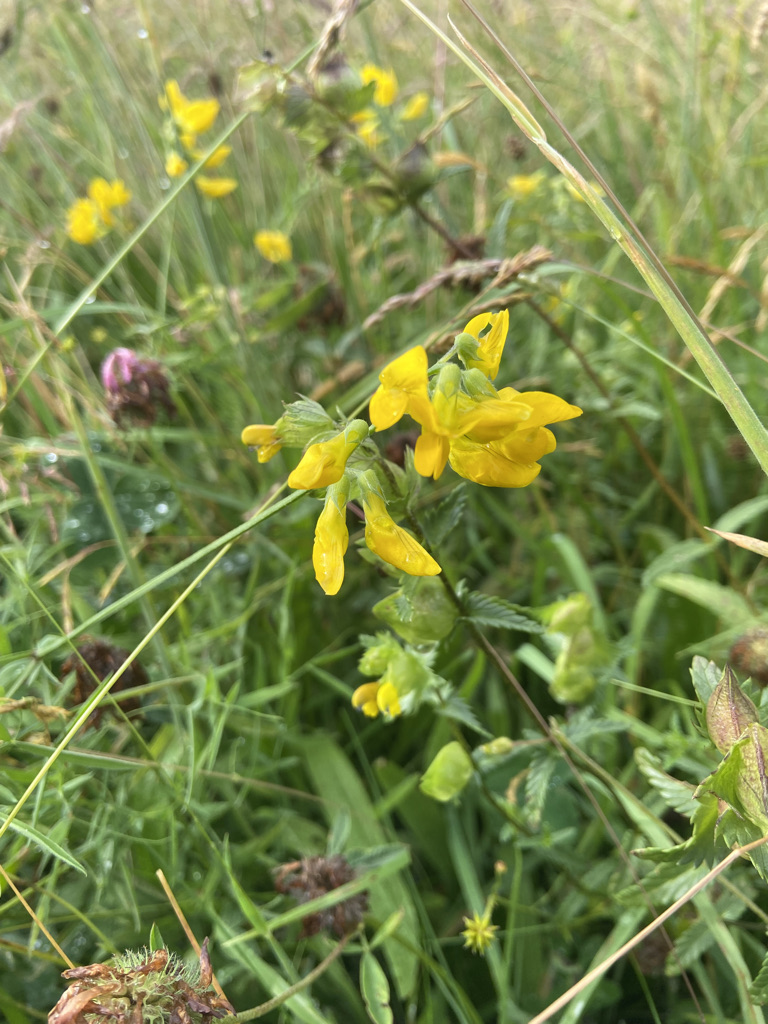
| 2021 | 2022 | ||||||||
| Density | 2 | 1 |
2022: on 15 July, this plant is not visible yet, except for one plant. By 18th, I think I’ve now spotted a few more plant leaves and some flowers but behind last year.
Galium verum, lady’s bedstraw
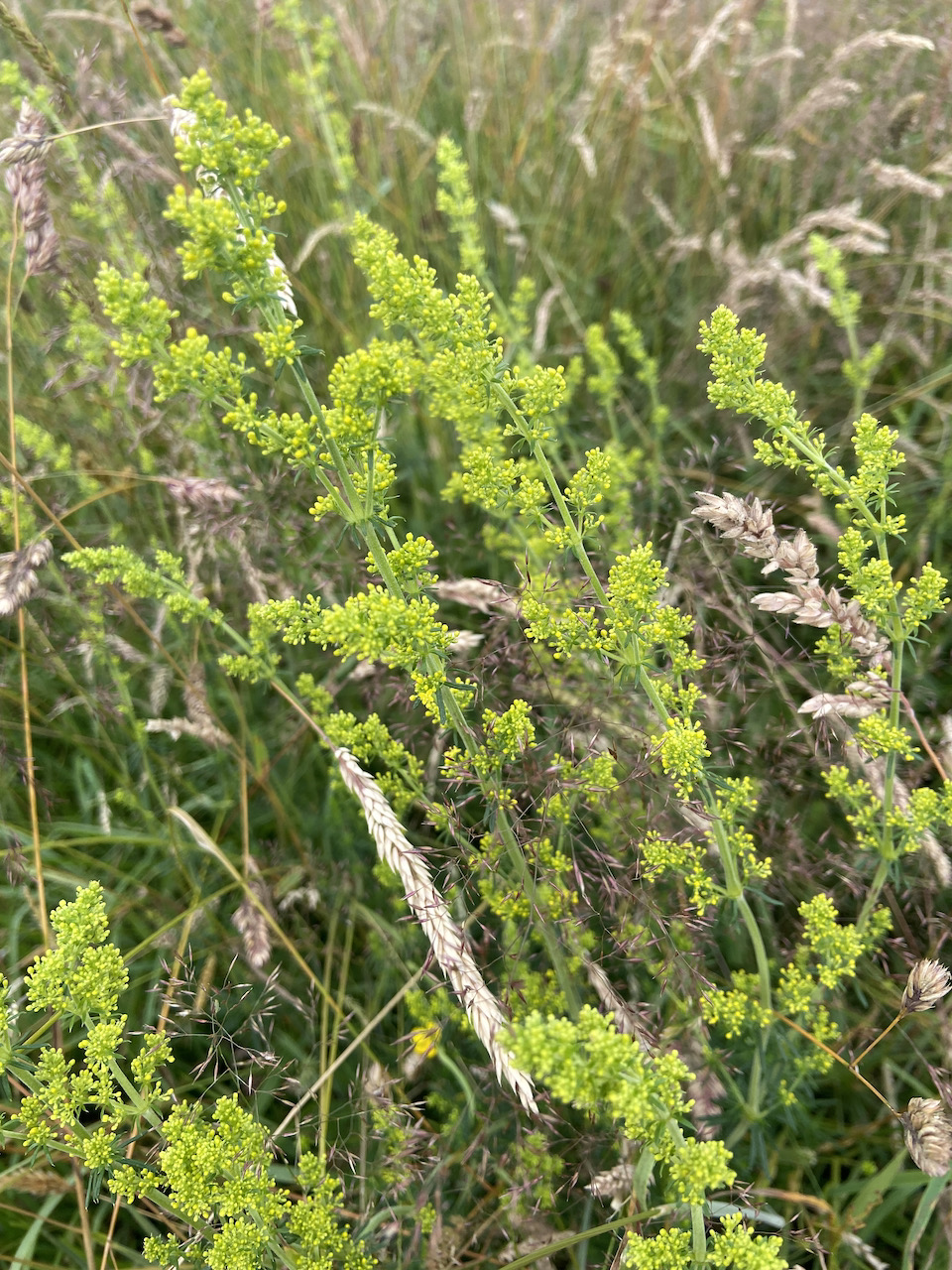
| 2021 | 2022 | ||||||||
| Density | 1 | 1 |
2022: a patch up by the gate leading to the path.
Geranium pratense, meadow cranesbill
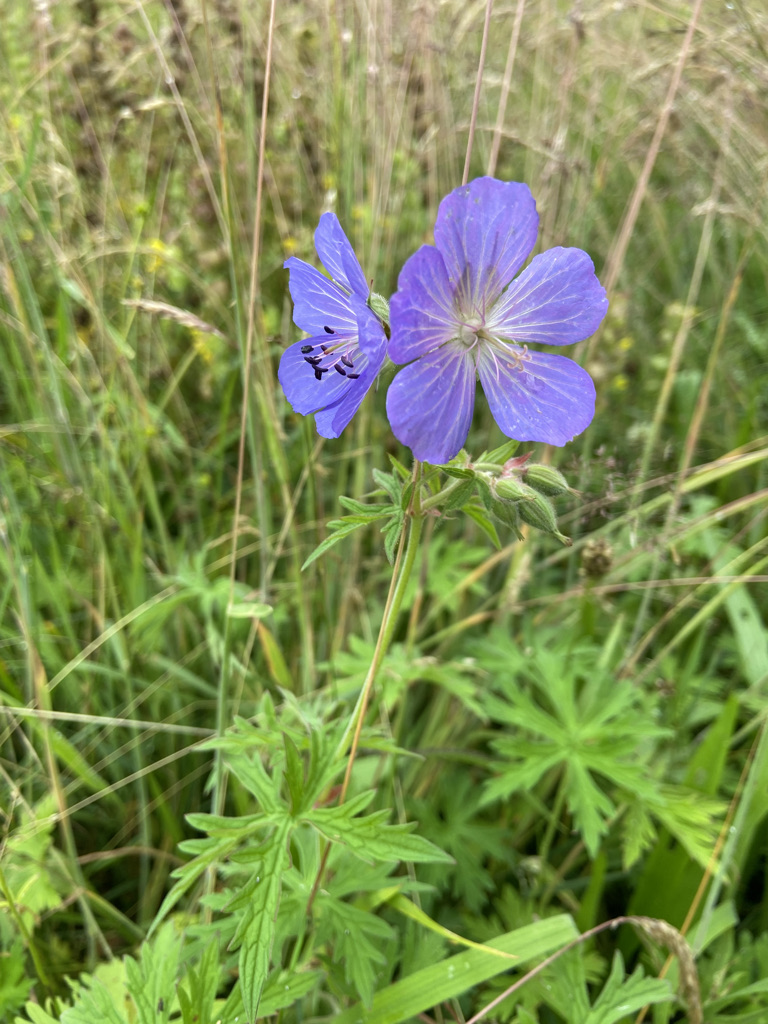
| 2021 | 2022 | ||||||||
| Density | 1 | – |
2022: on 15 July, none visible
Heracleum sphondylium, common hogweed
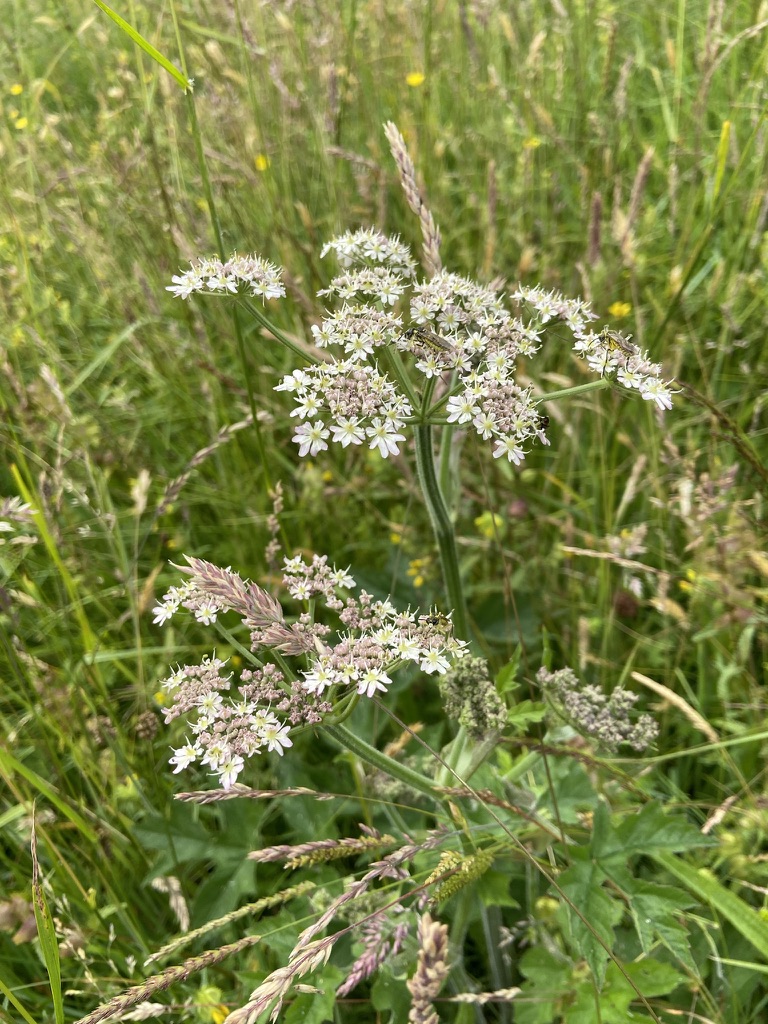
| 2021 | 2022 | ||||||||
| Density | 3 | 2 |
2022: as of 15 July, appear to be less flowers than last year – but potentially because deer are eating the flowers.
Hypochaeris radicata, cats ear
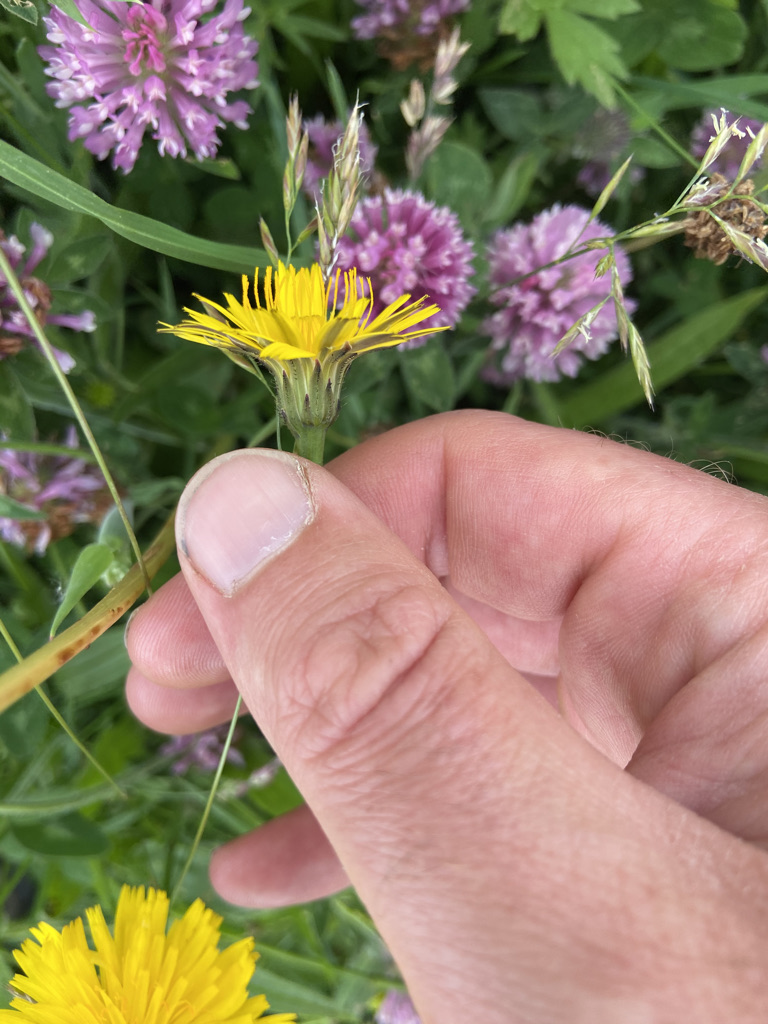
| 2021 | 2022 | ||||||||
| Density | 2 | 3 |
2022: appear to be more this year than last year, on 15 July, almost all flowers were over, which is earlier than last year, with plenty of seedheads
Knautia arvensis, field scabious
| 2021 | 2022 | ||||||||
| Density | – | 1 |
2022: spotted a plant today where the ragged robin was last year – field scabious possibly here last year too but didn’t note it down. Deer are eating the flowers.
Leucanthemum vulgare, ox-eye daisy
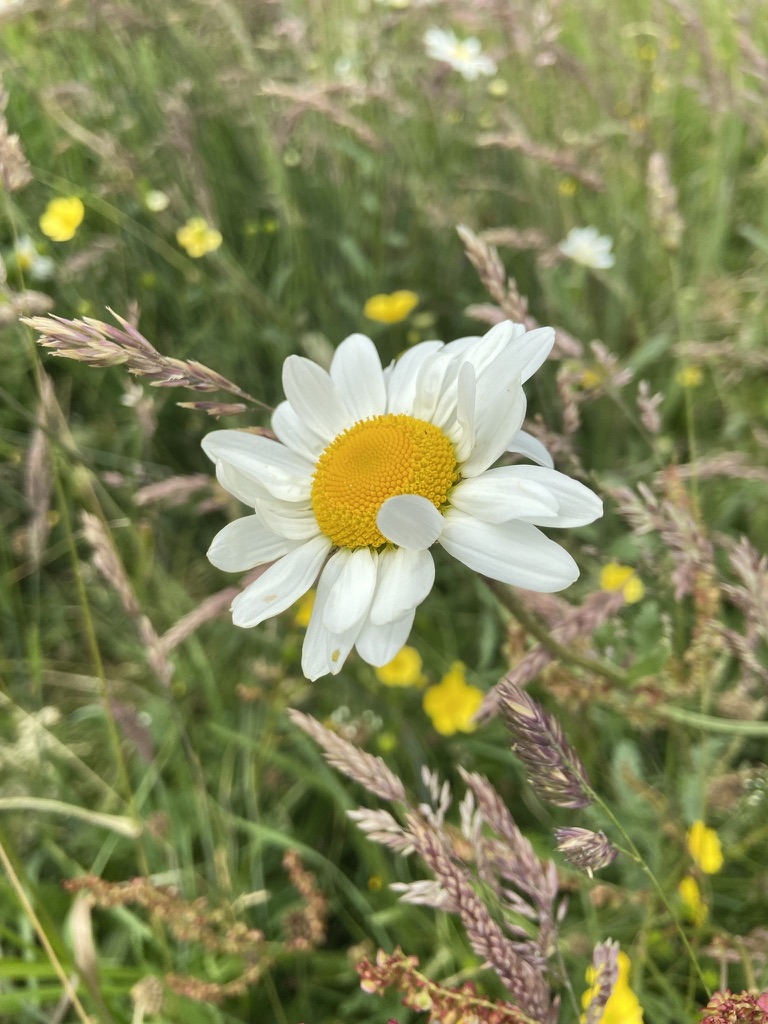
| 2021 | 2022 | ||||||||
| Density | 2 | 1 |
2022: on 15 July, only one flower, much less vigorous this year.
Myosotis discolor, changing forget-me-not
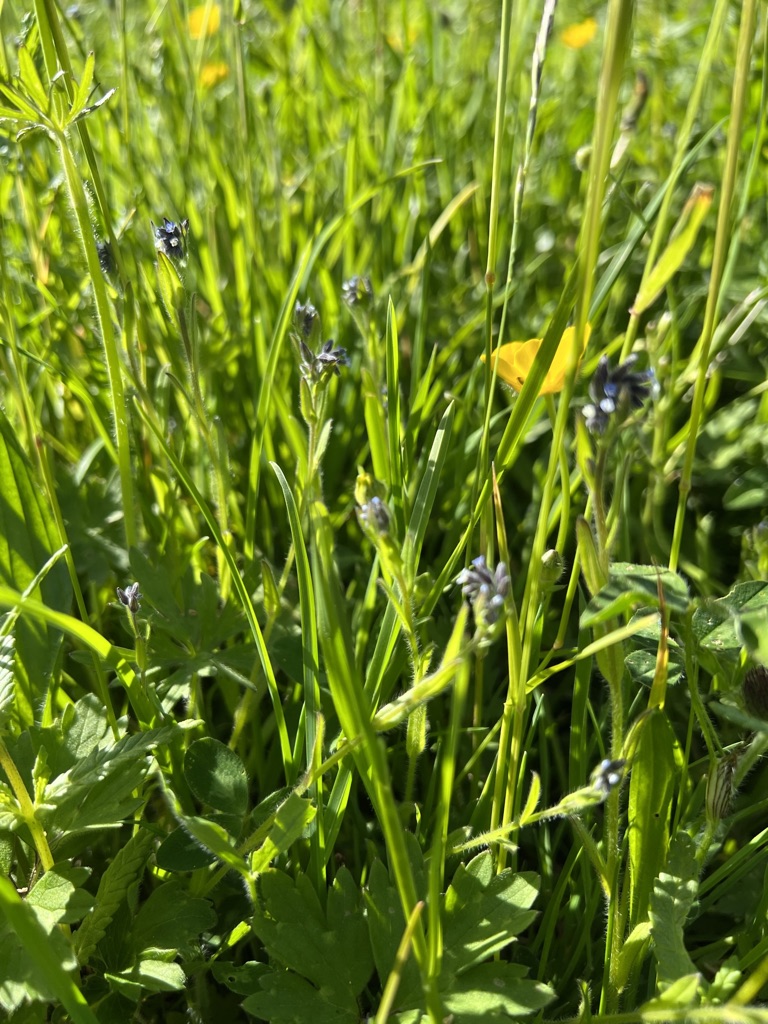
| 2021 | 2022 | ||||||||
| Density | 1 | 1 |
2022: saw one plant in the same place as last year earlier in the summer
Plantago lanceolata, ribwort plantain
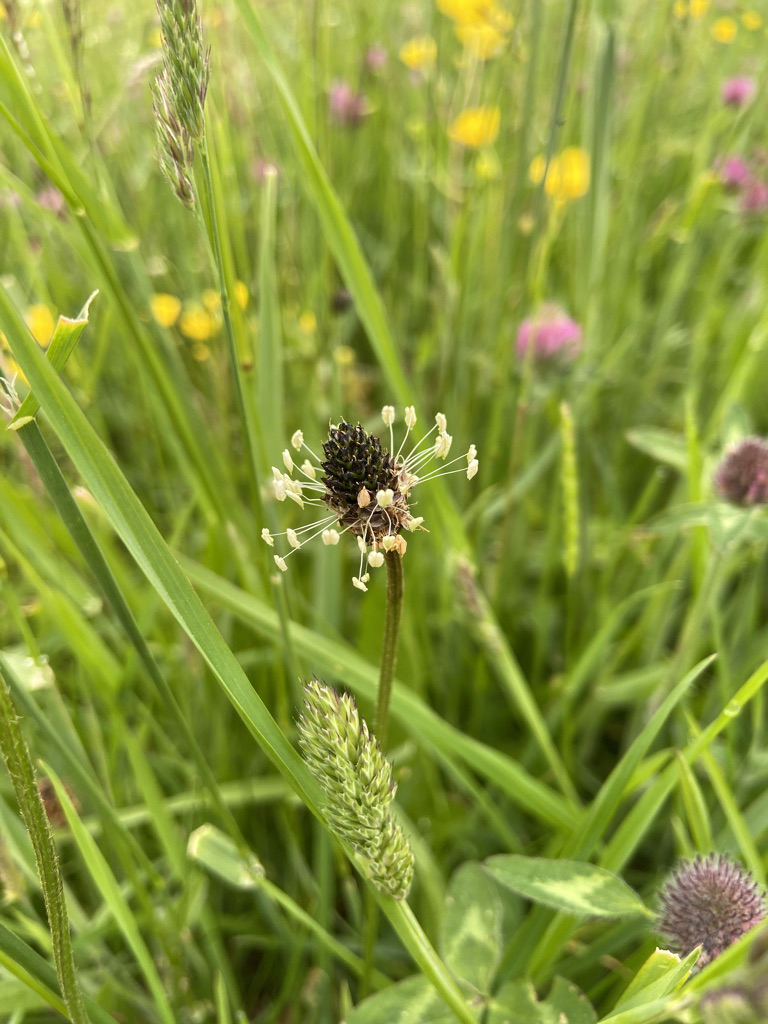
| 2021 | 2022 | ||||||||
| Density | 5 | 5 |
2022: prolific this year, very dense
Ranunculus arvensis, meadow buttercup
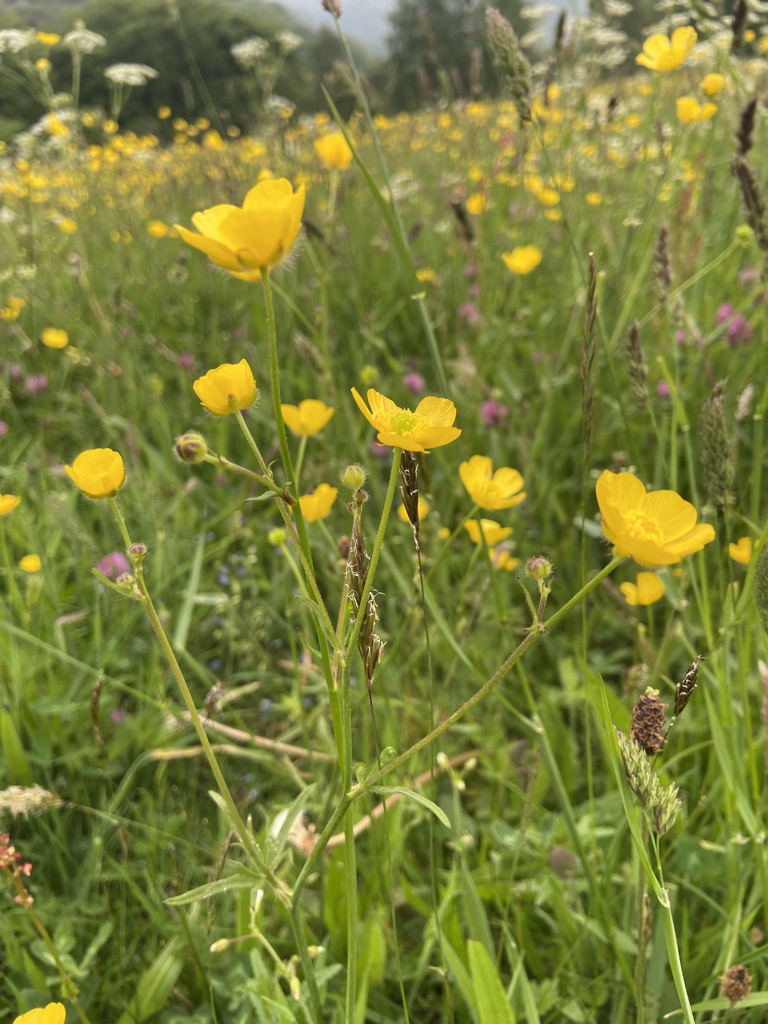
| 2021 | 2022 | ||||||||
| Density | 5 | 5 |
2022: all over field but feels like fewer plants
Rhinanthus minor, yellow rattle
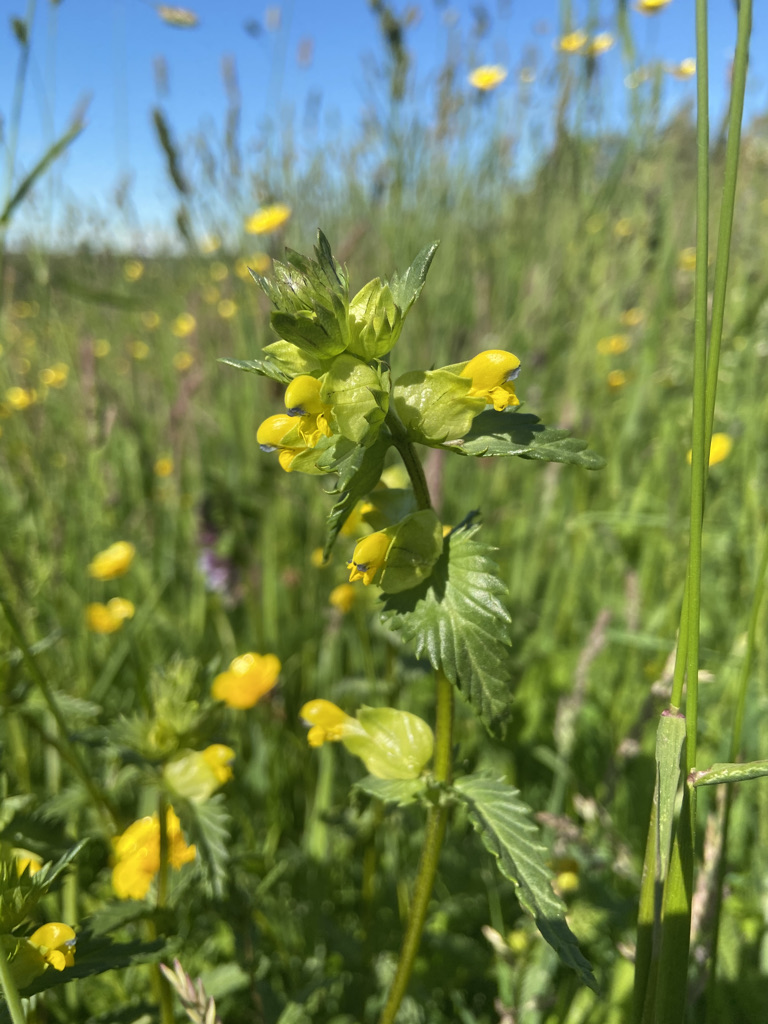
| 2021 | 2022 | ||||||||
| Density | 5 | 5 |
2022: extremely prolific this year, by far the most dominant plant this year. Too many.
Rumex acetosa, common sorrel
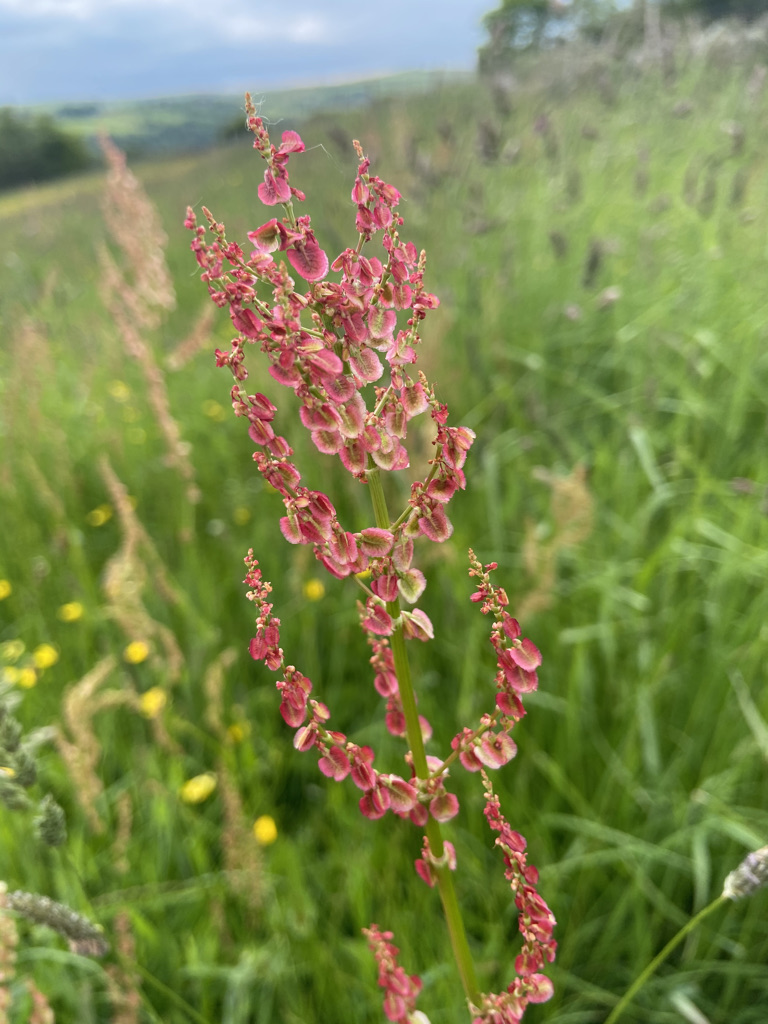
| 2021 | 2022 | ||||||||
| Density | 5 | 4 |
2022: fewer this year
Silene flos-cuculi, ragged robin
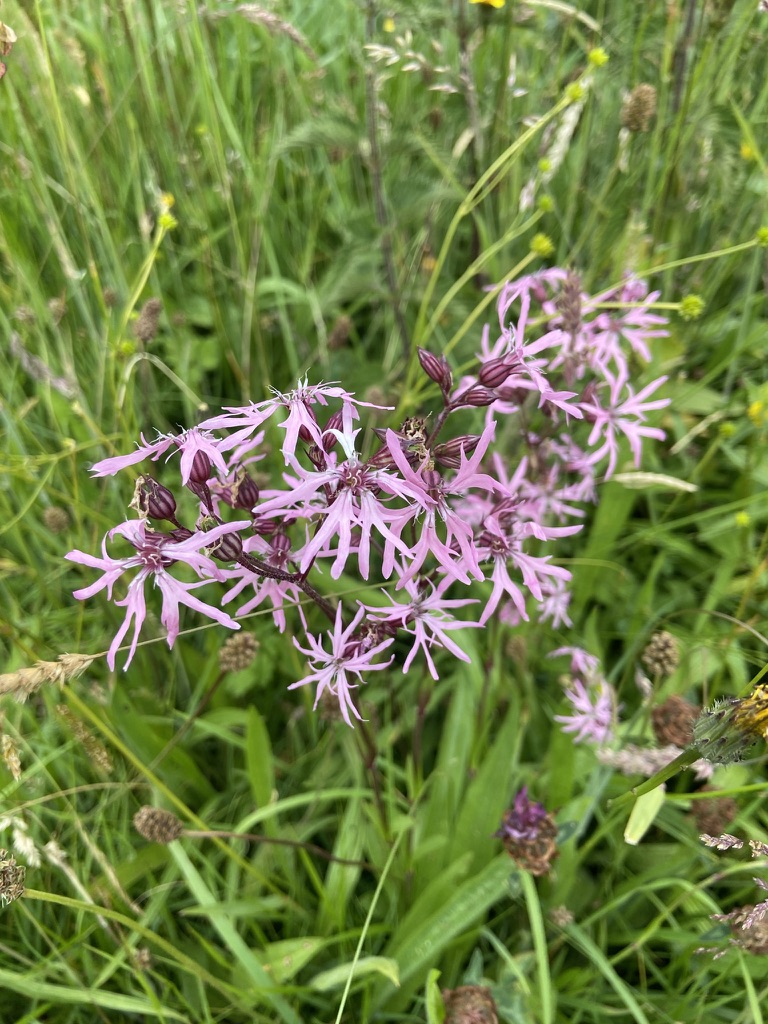
| 2021 | 2022 | 2023 | |||||||
| Density | 1 | – | 1 |
2022: on 15 July none visible
2023: on 30 May visible with two patches close to one another
Trifolium dubium, lesser trefoil
| 2021 | 2022 | 2023 | |||||||
| Density | – | – | 2 |
2023: I didn’t notice this plant in previous years but it’s quite widely spread across the very top of the main meadow.
Trifolium pratense, red clover
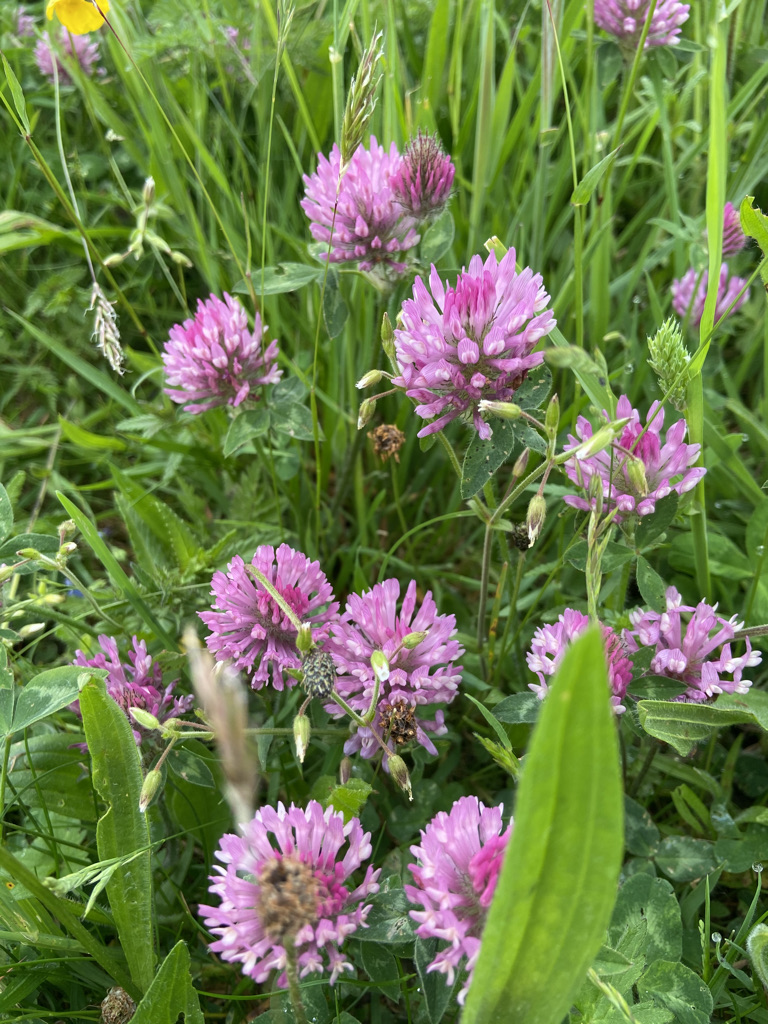
| 2021 | 2022 | ||||||||
| Density | 5 | 5 |
2022: a lot this year, almost all over by 15 July.
Trifolium repens, white clover
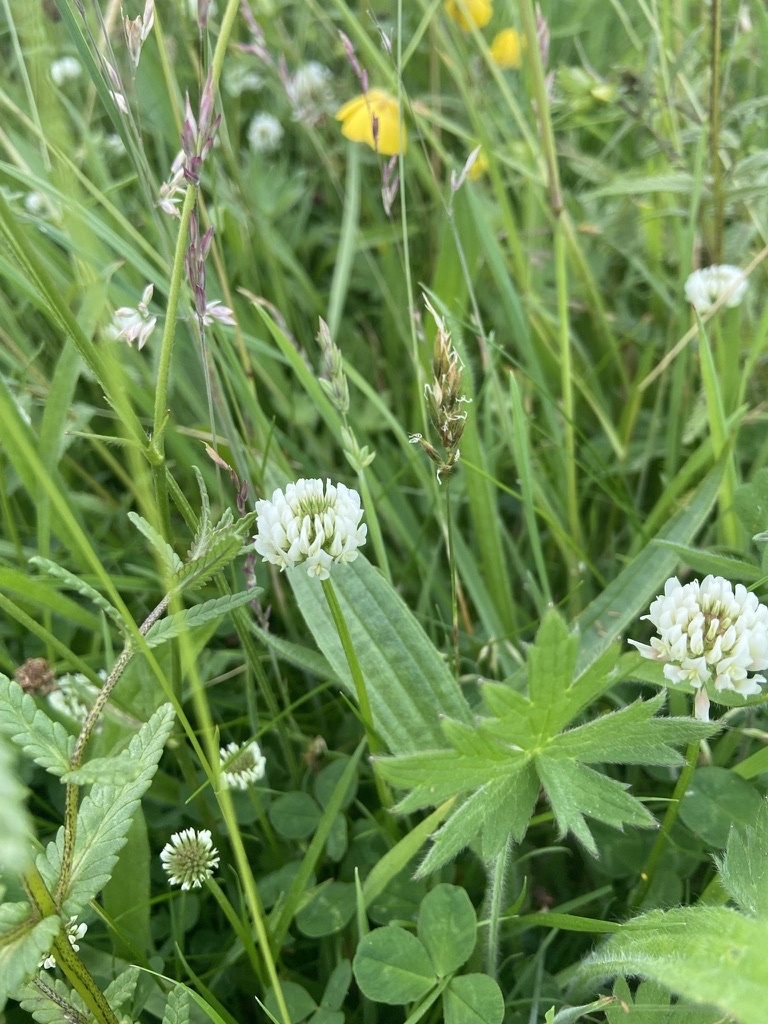
| 2021 | 2022 | ||||||||
| Density | 5 | 5 |
2022: as visible, perhaps slightly fewer this year, hard to know
Veronica chamaedrys, germander speedwell
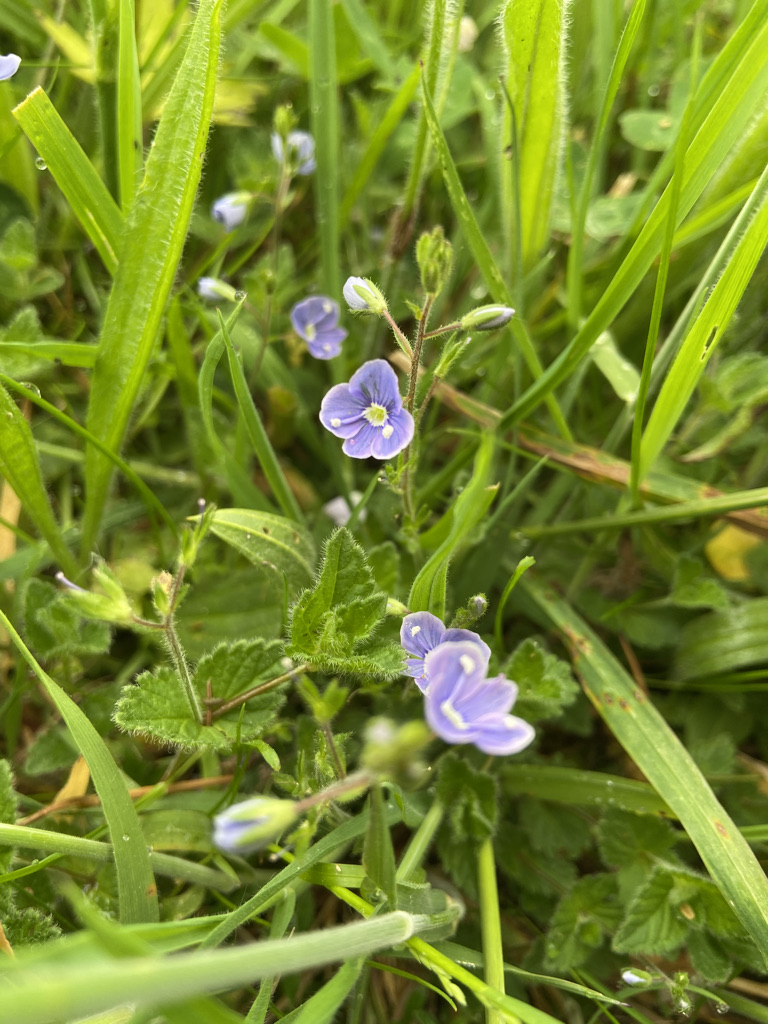
| 2021 | 2022 | ||||||||
| Density | 2 | 2 |
2022: same as last year, perhaps slightly less, hard to tell under all the yellow rattle and plantain
Vicia cracca, tufted vetch
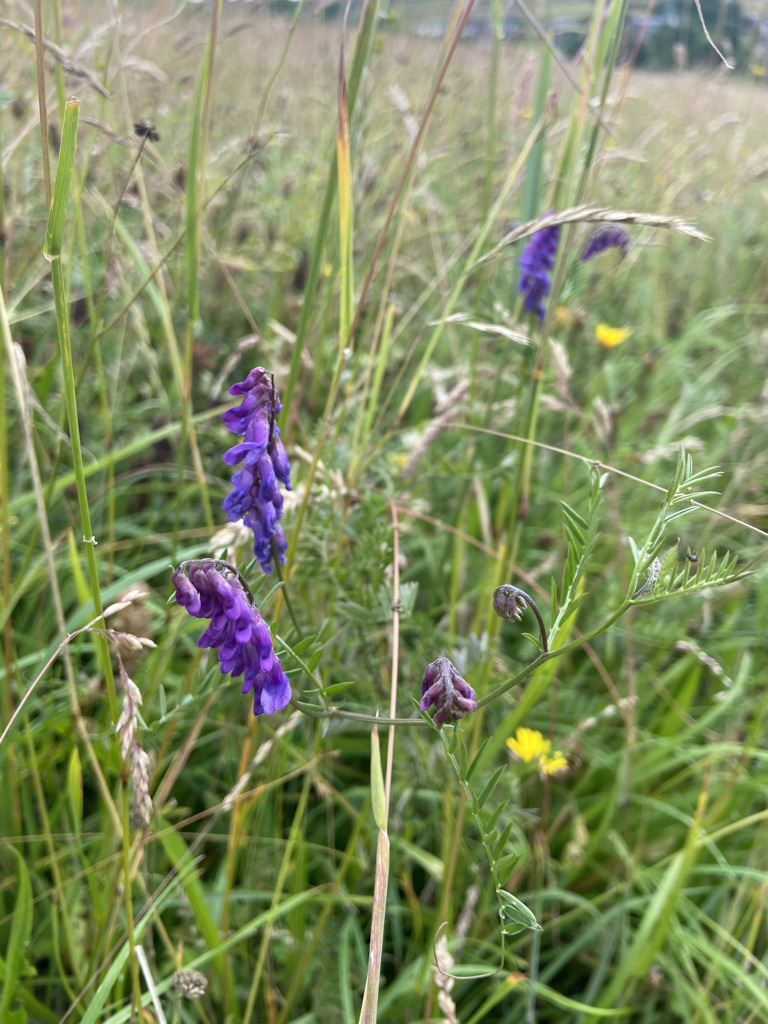
| 2021 | 2022 | ||||||||
| Density | 2 | 2 |
2022: still only a couple of patches but perhaps slightly more than last year. And it’s only just coming into flower on 15 July, so with more time it will be interesting how the later cut affects it.
Vicia sepium, bush vetch
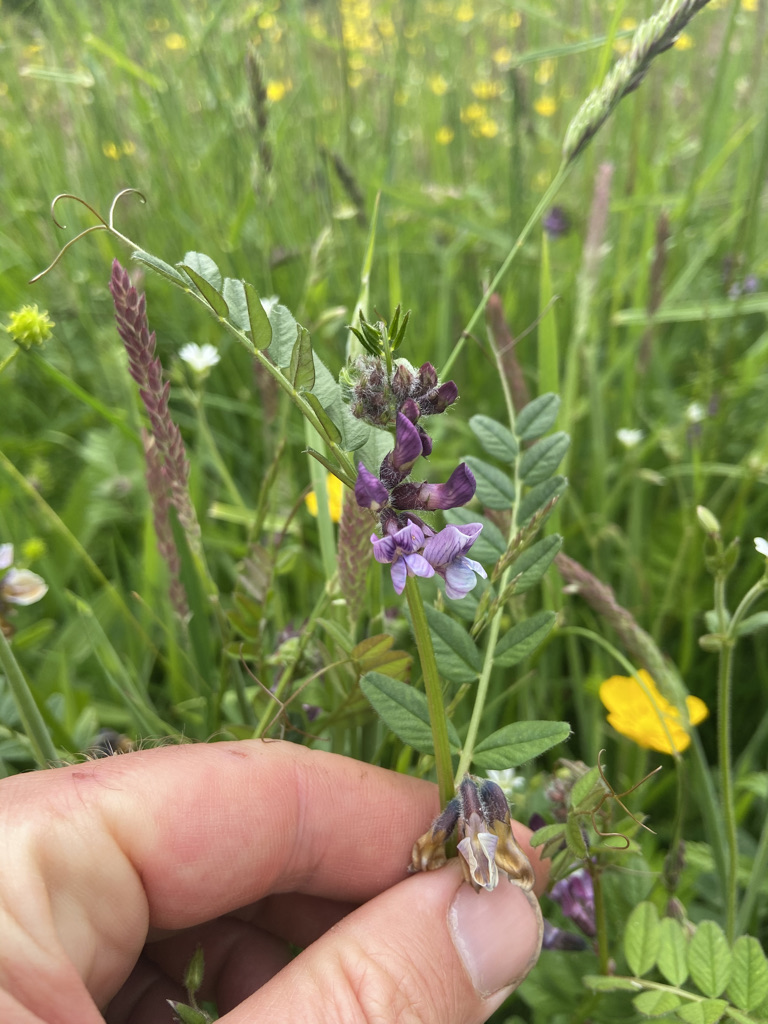
| 2021 | 2022 | ||||||||
| Density | 1 | 1 |
2022: less visible as of 15 July, but probably the same amount.
COMING SOON
I’ll be updating this page with the names of the grasses and fungi soon – stay tuned!
Fungi
Entoloma sericeum
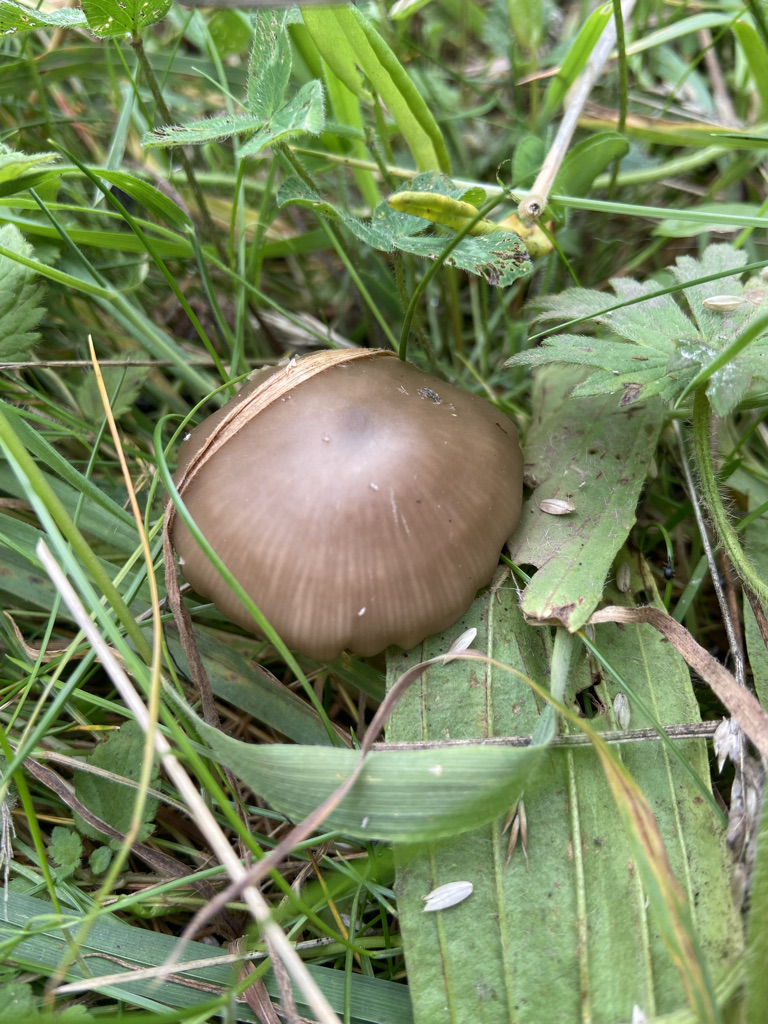
| 2021 | |||||||||
| TBC |
Grasses
Bromus hordaceus, Cynosurus cristatus, Alopecurus pratensis, Festuca cf. rubra
Anthoxanthum odoratum, Sweet-vernal grass
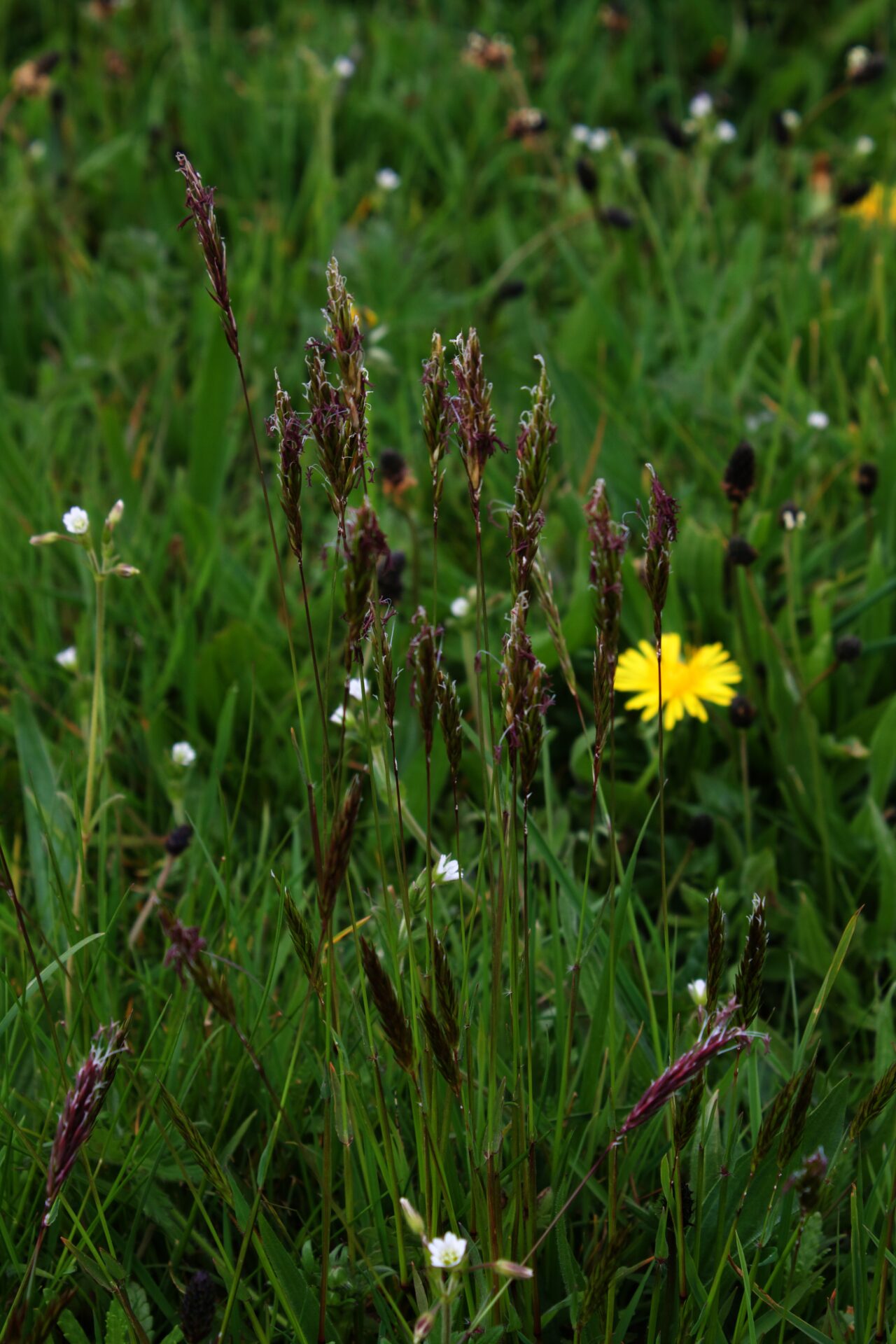
Cynosurus cristatus, crested dog’s tail
